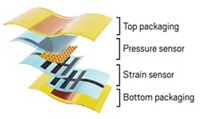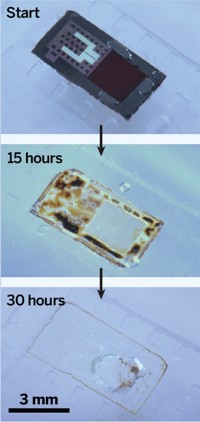Advertisement
Grab your lab coat. Let's get started
Welcome!
Welcome!
Create an account below to get 6 C&EN articles per month, receive newsletters and more - all free.
It seems this is your first time logging in online. Please enter the following information to continue.
As an ACS member you automatically get access to this site. All we need is few more details to create your reading experience.
Not you? Sign in with a different account.
Not you? Sign in with a different account.
ERROR 1
ERROR 1
ERROR 2
ERROR 2
ERROR 2
ERROR 2
ERROR 2
Password and Confirm password must match.
If you have an ACS member number, please enter it here so we can link this account to your membership. (optional)
ERROR 2
ACS values your privacy. By submitting your information, you are gaining access to C&EN and subscribing to our weekly newsletter. We use the information you provide to make your reading experience better, and we will never sell your data to third party members.
ACS Meeting News
Temporary pacemaker can fully dissolve in animal models
Biodegradability of the device eliminates the need for surgical removal
by Shi En Kim
August 23, 2022

Sometimes, durability is the last thing one might want in a medical device. Implants that dissolve into the body after they serve their purpose save the trouble of needing to be removed. Now scientists have taken temporary implants to a new level—by making a fully biodegradable pacemaker and pairing it with a control system to make it practical.
People recovering from cardiovascular surgery often need a temporary pacemaker, which needs to be extricated several weeks later. But the second surgery is riskier than the first—by then, scar tissue will have grown on the heart around the implant. If not careful, surgeons might rip this tissue along with the healthy muscle underneath. The consequences can be fatal: astronaut Neil Armstrong died in 2012 from such complications soon after an operation to extract his pacemaker.
Materials scientist John Rogers of Northwestern University and colleagues have developed a pacemaker the size of a quarter that can dissolve away a few weeks after its installment (Science 2022, DOI: 10.1126/science.abm1703). Rogers presented the research on Monday at the American Chemical Society Fall 2022 meeting in the Division of Analytical Chemistry.
“It’s a beautiful piece of work,” says Helen Tran, a molecular architect at the University of Toronto who didn’t participate in the research. “It’s like science fiction, but reality.”
The researchers fashioned their pacemaker’s electrical conduits from magnesium and the interconnects from molybdenum; both metals eventually solubilize. The pacemaker’s semiconductor element is a silicon chip less than 100 nm thick, which makes it amenable to full hydrolysis within the device’s lifetime. Encapsulating the pacemaker is a stretchy polyurethane sheath that breaks down in the body after a few weeks.
This isn’t the group’s first attempt at assembling a bioresorbable pacemaker. But this version pairs with a network of wearable accessories that work in sync with the device. These wearable electronic modules collect data from different parts of the body, which they use to modulate the pacemaker’s rhythm accordingly. A chest unit worn above the heart delivers power wirelessly to the pacemaker underneath.
“Everything works together,” Rogers told C&EN. “This technology would allow patients to be released from the hospital earlier…because of the wireless operation and the ability to deliver this function in a home setting.”
So far tested only in animal models for its function and degradability and on a human heart ex vivo, the pacemaker will need to cross regulatory hurdles before being implanted in people. Tran says she also hopes to see toxicity studies on the pacemaker as it decomposes, to ensure that all intermediate by-products are truly harmless to the body.
At the meeting, Rogers also reported the invention of a transient electrical nerve stimulator (Nat. Med. 2018, DOI: 10.1038/s41591-018-0196-2) and a short-lasting cuff that wraps around nerves to relieve pain (Science 2022, DOI: 10.1126/science.abl8532), both intended for postsurgical care. Down the line, he hopes to extend the lifetime of his devices from weeks to months to treat slower healing injuries, such as bone fractures.
UPDATE:
The headline of this story was updated on Aug. 29, 2022, to clarify that the device fully dissolves in the bodies of animal models.





Join the conversation
Contact the reporter
Submit a Letter to the Editor for publication
Engage with us on Twitter